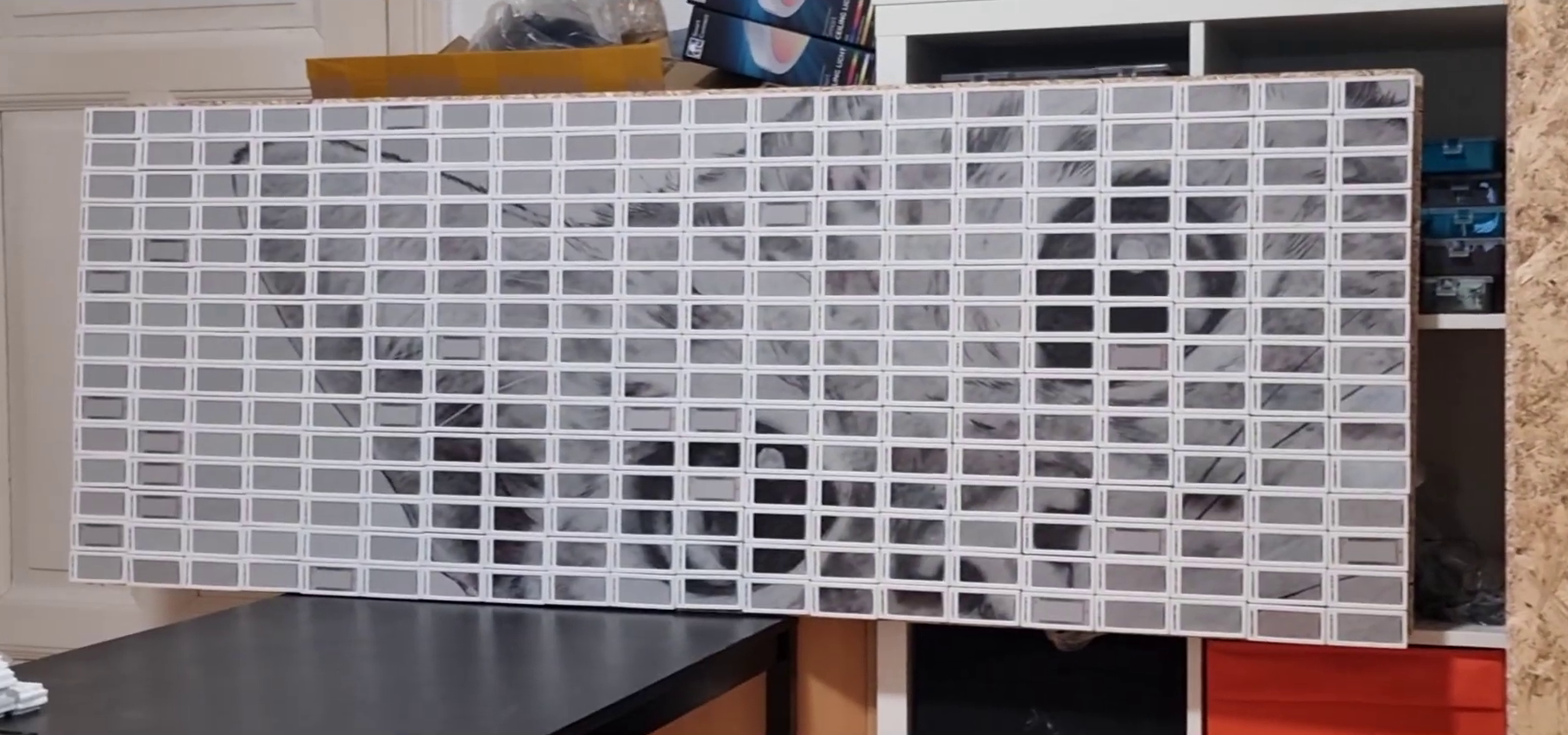Iron nitrides: powerful magnets without the rare earth elements
Since their relatively recent appearance on the commercial scene, rare-earth magnets have captured the imagination of the public. The amount of magnetic energy contained in these tiny shiny objects has led to advances in technology that weren't possible before they appeared, like vibration motors in cell phones or tiny speakers in headphones and hearing aids. Not to mention the motors of electric vehicles and the generators of wind turbines, as well as countless medical, military and scientific uses.
These advances come at a cost, however, as the rare earth elements needed to make them are increasingly hard to come by. It's not that rare earth elements like neodymium are so geologically rare; on the contrary, deposits are unevenly distributed, allowing metals to easily become pawns in an endless game of geopolitical chess. Moreover, extracting them from their ores is a tricky business in a time of heightened sensitivity to environmental considerations.
Fortunately, there is more than one way to make a magnet, and it may soon be possible to build permanent magnets as strong as neodymium magnets, but without rare earth metals. In fact, the only thing needed to make them is iron and nitrogen, along with an understanding of crystal structure and some engineering ingenuity.
Align allTo begin with, what is a permanent magnet? Like many simple nature questions, there's no easy answer that doesn't require a fair amount of hand gestures. Even physicists eventually get to a point where their answer boils down to "We just don't know". But that doesn't mean magnetism is a complete mystery, and the things we know about it are pretty simple and actually help in understanding how rare earth magnets and their alternatives work.
We've already tried the basics of magnetism, but to sum up, any charged particle, like an electron, has what's called an intrinsic magnetic moment, which means they act like little magnets. In atoms with filled electron shells, these magnetic moments cancel out because each pair of electrons has moments that point in opposite directions. But in atoms with unpaired electrons in their outer shells, there is nothing to cancel the magnetic moments, which means these elements are magnetic. These elements tend to come from two specific areas of the periodic table: d-block metals like cobalt, nickel, and iron, and f-block actinides, which include rare-earth metals like samarium, neodymium, and iron. praseodymium.< /p>
 Ferromagnetic elements tend to have unpaired electrons, like those in the middle of the d and f blocks of the periodic table. But what about the nitrogen, all over there in the p-block? Source: Minute Physics
Ferromagnetic elements tend to have unpaired electrons, like those in the middle of the d and f blocks of the periodic table. But what about the nitrogen, all over there in the p-block? Source: Minute Physics
A magnet is more than just where its ingredients come from on the periodic table. Magnetism consists in aligning all these intrinsic magnetic moments and acting in the same direction. Just as the electrons of an atom of a magnetic element must not fight each other, the atoms must also arrange so that their magnetic moments all point in the same direction. This is called having a high magnetic field...

Since their relatively recent appearance on the commercial scene, rare-earth magnets have captured the imagination of the public. The amount of magnetic energy contained in these tiny shiny objects has led to advances in technology that weren't possible before they appeared, like vibration motors in cell phones or tiny speakers in headphones and hearing aids. Not to mention the motors of electric vehicles and the generators of wind turbines, as well as countless medical, military and scientific uses.
These advances come at a cost, however, as the rare earth elements needed to make them are increasingly hard to come by. It's not that rare earth elements like neodymium are so geologically rare; on the contrary, deposits are unevenly distributed, allowing metals to easily become pawns in an endless game of geopolitical chess. Moreover, extracting them from their ores is a tricky business in a time of heightened sensitivity to environmental considerations.
Fortunately, there is more than one way to make a magnet, and it may soon be possible to build permanent magnets as strong as neodymium magnets, but without rare earth metals. In fact, the only thing needed to make them is iron and nitrogen, along with an understanding of crystal structure and some engineering ingenuity.
Align allTo begin with, what is a permanent magnet? Like many simple nature questions, there's no easy answer that doesn't require a fair amount of hand gestures. Even physicists eventually get to a point where their answer boils down to "We just don't know". But that doesn't mean magnetism is a complete mystery, and the things we know about it are pretty simple and actually help in understanding how rare earth magnets and their alternatives work.
We've already tried the basics of magnetism, but to sum up, any charged particle, like an electron, has what's called an intrinsic magnetic moment, which means they act like little magnets. In atoms with filled electron shells, these magnetic moments cancel out because each pair of electrons has moments that point in opposite directions. But in atoms with unpaired electrons in their outer shells, there is nothing to cancel the magnetic moments, which means these elements are magnetic. These elements tend to come from two specific areas of the periodic table: d-block metals like cobalt, nickel, and iron, and f-block actinides, which include rare-earth metals like samarium, neodymium, and iron. praseodymium.< /p>
 Ferromagnetic elements tend to have unpaired electrons, like those in the middle of the d and f blocks of the periodic table. But what about the nitrogen, all over there in the p-block? Source: Minute Physics
Ferromagnetic elements tend to have unpaired electrons, like those in the middle of the d and f blocks of the periodic table. But what about the nitrogen, all over there in the p-block? Source: Minute Physics
A magnet is more than just where its ingredients come from on the periodic table. Magnetism consists in aligning all these intrinsic magnetic moments and acting in the same direction. Just as the electrons of an atom of a magnetic element must not fight each other, the atoms must also arrange so that their magnetic moments all point in the same direction. This is called having a high magnetic field...
What's Your Reaction?















![Three of ID's top PR executives quit ad firm Powerhouse [EXCLUSIVE]](https://variety.com/wp-content/uploads/2023/02/ID-PR-Logo.jpg?#)







